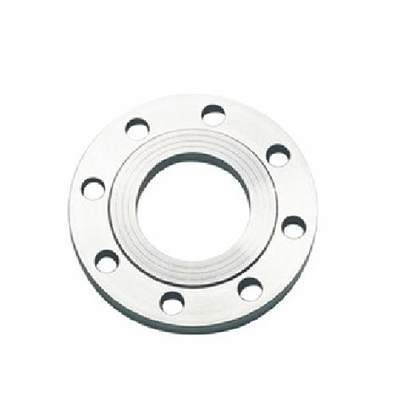Welcome to My Blog!
Before we dive into the content, if you’re interested in our products or have any questions, please feel free to visit our Contact Us page on the website. Our team is ready to assist you with inquiries, orders, or any support you may need.
Now, let’s get started on our journey together. I hope you find the content here insightful, engaging, and valuable.
Flanges are a fundamental component in piping systems, serving as the connection point for pipes, valves, pumps, and other equipment. Whether in industrial plants, water treatment facilities, or oil and gas pipelines, flanges play a critical role in maintaining system integrity, facilitating maintenance, and ensuring safety. Understanding the types, materials, standards, and installation methods of flanges is essential for engineers, technicians, and procurement professionals.
Introduction

A flange is a flat or raised rim, collar, or ring that connects pipes or equipment, often using bolts and gaskets to create a secure and leak-proof seal. Flanges provide a convenient method for assembling and disassembling piping systems, making maintenance, inspection, and repairs much simpler. They are commonly used in industries like chemical processing, power generation, and petrochemicals, where pressure and temperature conditions vary widely.
Types of Flanges
Flanges come in various types, each designed for specific applications:
- Weld Neck Flange: Known for its long tapered hub, which distributes stress evenly, weld neck flanges are ideal for high-pressure and high-temperature applications.
- Slip-On Flange: Easy to install, slip-on flanges slide over the pipe and are then welded in place. They are suitable for low-pressure systems.
- Blind Flange: Used to close the end of a piping system, blind flanges provide easy access for inspection and maintenance.
- Threaded Flange: These flanges have a threaded bore that fits over a threaded pipe, allowing for easy installation without welding.
- Socket Weld Flange: Designed for small-diameter, high-pressure pipes, socket weld flanges are welded at the socket, offering a strong and reliable joint.
- Other Types: Lap joint flanges, orifice flanges, and other specialized designs cater to unique industrial requirements.
Flange Materials
The material choice for a flange depends on the application, pressure, and environmental conditions:
- Stainless Steel Flanges: Corrosion-resistant and durable, ideal for chemical, food, and pharmaceutical industries.
- Carbon Steel Flanges: Cost-effective and strong, commonly used in general industrial and water piping systems.
- Alloy Steel and Specialty Materials: Used in high-temperature, high-pressure, or highly corrosive environments.
- Material Selection Factors: Temperature, pressure, chemical exposure, and mechanical stress influence the choice of flange material.
Flange Standards and Specifications
Flanges are manufactured according to recognized standards to ensure compatibility and safety:
- ANSI/ASME Standards: Commonly used in the United States, defining dimensions, pressure classes, and material specifications.
- DIN Standards: German standards for flanges, widely used in Europe and industrial applications.
- JIS Standards: Japanese standards, primarily used in Asia.
- Pressure Ratings: Flanges are classified by pressure classes or PN ratings, which indicate the maximum operating pressure.
How Flanges Work in Piping Systems
Flanges serve multiple purposes in a piping system:
- Connecting Pipes and Valves: Flanges create a secure mechanical connection, allowing for easy assembly and disassembly.
- Facilitating Maintenance and Repairs: They enable quick removal of sections of the pipeline for inspection, cleaning, or replacement.
- Sealing and Pressure Containment: Combined with gaskets and bolts, flanges ensure leak-free operation under various pressures and temperatures.
- Supporting Flow Control and System Flexibility: Flanges allow modifications and expansions in a piping system without major disruptions.
How to Measure and Select the Right Flange
Choosing the correct flange requires careful consideration of dimensions and application requirements:
- Key Dimensions: Outer diameter, bolt circle diameter, and flange thickness are critical for compatibility.
- Matching Flange to Pipe Size and Pressure: Ensure that the flange’s pressure rating matches the operating conditions of the system.
- Selecting the Correct Flange Type: Consider the application, installation method, and maintenance needs when choosing between weld neck, slip-on, or other flange types.
Flange Installation Guide
Proper installation is essential for safe and efficient operation:
- Preparing the Flange and Pipe: Ensure clean surfaces and proper alignment before assembly.
- Bolting and Torque Guidelines: Follow recommended torque specifications to avoid leaks or damage.
- Using Gaskets for Leak Prevention: Choose appropriate gaskets for temperature and pressure conditions.
- Safety Tips and Common Mistakes: Avoid overtightening bolts, misalignment, and using incompatible materials.
Flange Maintenance and Troubleshooting
Regular maintenance extends flange life and prevents costly failures:
- Regular Inspection and Corrosion Prevention: Inspect for rust, cracks, or leaks and apply protective coatings if necessary.
- Detecting Leaks and Damage: Monitor system pressure and flow; replace gaskets and bolts when signs of leakage appear.
- Replacing Flanges and Bolts Safely: Follow proper shutdown procedures and use correct tools.
- Common Problems and Solutions: Address misalignment, gasket failure, and corrosion proactively.
Buying and Choosing Flanges

Selecting the right flange supplier and product is crucial:
- Where to Buy High-Quality Flanges: Choose reputable manufacturers and distributors to ensure material quality and compliance with standards.
- Price Considerations: Compare costs based on material, type, and pressure rating.
- Comparing Brands and Materials: Assess durability, corrosion resistance, and warranty options.
- Custom vs Standard Flanges: Custom flanges are available for unique applications but may require longer lead times and higher costs.
FAQ
What is a flange used for?
A flange connects pipes, valves, pumps, and other equipment in a piping system, providing a secure, leak-proof joint and allowing easy maintenance or repairs.
What are the main types of flanges?
Common types include weld neck, slip-on, blind, threaded, and socket weld flanges, each suited for specific pressure and installation requirements.
How do I choose the right flange material?
Material selection depends on application, pressure, temperature, and corrosion conditions. Stainless steel, carbon steel, and alloy steel are commonly used.
How do I measure a flange correctly?
Key dimensions include outer diameter, bolt circle diameter, thickness, and pipe size. Accurate measurement ensures compatibility and leak-free connections.
Can flanges be reused after removal?
Some flanges can be reused if undamaged, but gaskets and bolts should typically be replaced to ensure a secure and leak-free seal.
Need Help Choosing the Right Flange for Your Piping System?
If you’re unsure which flange type, material, or size is best for your pipeline or industrial system, our experts are here to guide you. Contact us today for a personalized consultation, and ensure your piping system is safe, efficient, and up to standard. Don’t wait until a leak or failure occurs—get in touch now to protect your operations and equipment!
